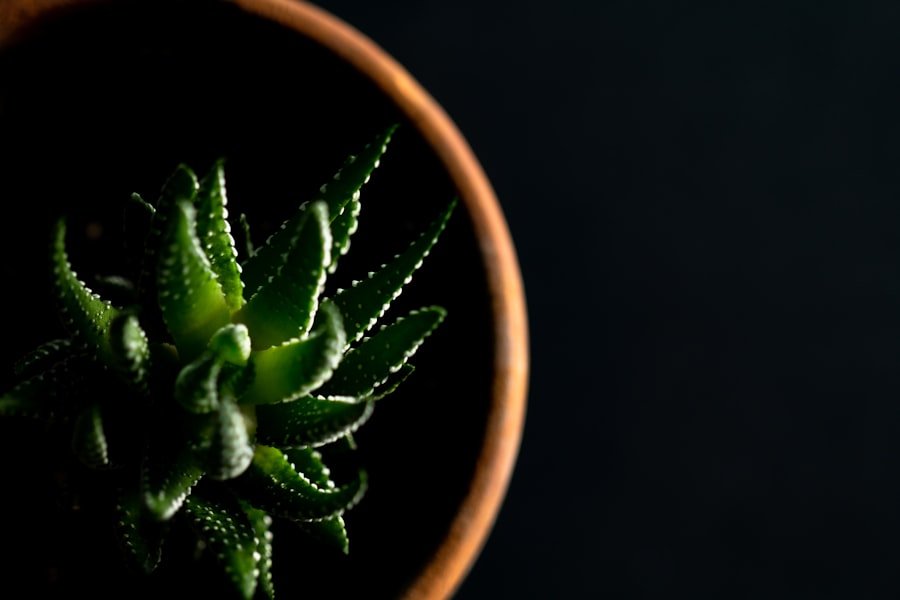Razor burn is a common skin irritation that many of us experience after shaving. It manifests as redness, bumps, and a burning sensation on the skin, often making the post-shave experience uncomfortable. This irritation can occur on various parts of the body, including the face, legs, and underarms.
Understanding the causes of razor burn is essential for us to effectively address and prevent it. Typically, razor burn results from the friction of the razor against the skin, which can lead to inflammation and irritation. Factors such as dull blades, improper shaving techniques, and sensitive skin can exacerbate this condition.
Moreover, we should recognize that razor burn is not just a cosmetic issue; it can also affect our confidence and self-esteem. The discomfort associated with razor burn can deter us from shaving altogether, leading to unwanted hair growth or alternative hair removal methods that may not be ideal for our skin type. By understanding the underlying causes of razor burn, we can take proactive steps to minimize its occurrence and maintain healthy skin.
Key Takeaways
- Razor burn is a common skin irritation caused by shaving
- Prevention is key to avoiding razor burn
- Choosing the right razor can help prevent razor burn
- Proper shaving technique can reduce the risk of razor burn
- Using the right products can help prevent and treat razor burn
Prevention is Key
Prepare Your Skin
This includes cleansing the area to remove dirt and oil, which can contribute to irritation. Additionally, we should consider exfoliating our skin a day or two before shaving to remove dead skin cells that can clog the razor and lead to uneven shaving. By taking these preliminary steps, we create a smoother surface for the razor to glide over, reducing the likelihood of irritation.
Use a Sharp Razor Blade
Another vital aspect of prevention is ensuring that we use a sharp razor blade. Dull blades can tug at the hair rather than cutting it cleanly, increasing friction and the risk of razor burn. We should make it a habit to replace our blades regularly and avoid using disposable razors for extended periods.
Explore Alternative Methods
Furthermore, we can also explore alternative hair removal methods that may be less irritating for our skin type, such as electric shavers or depilatory creams. By prioritizing prevention, we can significantly reduce our chances of experiencing razor burn.
Choosing the Right Razor

Selecting the right razor is fundamental in our quest to avoid razor burn. With so many options available on the market, it can be overwhelming to determine which one suits our needs best. We should consider factors such as our skin type, hair thickness, and shaving frequency when making our choice.
For instance, those with sensitive skin may benefit from using razors specifically designed for delicate skin, which often feature fewer blades and protective barriers to minimize irritation. Additionally, we should also evaluate whether a manual or electric razor is more suitable for us. While manual razors provide a close shave, they may require more skill and technique to avoid nicks and cuts.
On the other hand, electric razors are generally gentler on the skin and can be a great option for those prone to razor burn. Ultimately, finding the right razor involves some trial and error, but investing time in this decision can lead to a more comfortable shaving experience.
Proper Shaving Technique
Mastering proper shaving techniques is essential for minimizing razor burn. One of the first things we should remember is to always shave in the direction of hair growth rather than against it. Shaving against the grain can lead to increased irritation and ingrown hairs, both of which contribute to razor burn.
Additionally, we should avoid applying excessive pressure while shaving; letting the weight of the razor do the work is often sufficient for a close shave without causing damage to the skin. Another important technique involves using short strokes rather than long ones. This approach allows us to maintain better control over the razor and reduces the risk of missing spots or causing irritation.
We should also take our time while shaving; rushing through the process can lead to mistakes that result in cuts or burns. By focusing on our technique and being mindful of how we shave, we can significantly reduce our chances of experiencing razor burn.
Using the Right Products
The products we use during shaving play a crucial role in preventing razor burn. A high-quality shaving cream or gel can create a protective barrier between the razor and our skin, allowing for a smoother glide and reducing friction. We should look for products that are specifically formulated for sensitive skin or contain soothing ingredients like aloe vera or chamomile.
These ingredients not only help to lubricate the skin but also provide calming effects that can alleviate irritation. In addition to shaving creams, we should also consider using pre-shave oils or lotions that can further enhance our shaving experience. These products help to soften hair and prepare the skin for shaving, making it easier for the razor to cut through hair without causing damage.
After shaving, applying a gentle aftershave balm or moisturizer can help soothe any irritation that may occur and keep our skin hydrated. By carefully selecting our shaving products, we can create an environment that minimizes the risk of razor burn.
Home Remedies for Razor Burn

When we do experience razor burn, there are several home remedies we can try to alleviate discomfort and promote healing. One effective remedy is applying cold compresses to the affected area. The coolness helps reduce inflammation and soothes irritated skin.
We can simply wrap ice cubes in a clean cloth or use a cold pack and apply it for 10-15 minutes after shaving. Another popular home remedy involves using natural ingredients like aloe vera gel or coconut oil. Aloe vera is known for its soothing properties and can help calm irritated skin while providing hydration.
We can apply pure aloe vera gel directly onto the affected area after shaving for relief.
Similarly, coconut oil has anti-inflammatory properties and acts as a moisturizer, making it an excellent option for post-shave care. By incorporating these simple home remedies into our routine, we can effectively manage razor burn when it occurs.
Over-the-Counter Treatments
For those who find home remedies insufficient in alleviating their razor burn symptoms, over-the-counter treatments are available that can provide relief.
Many pharmacies offer topical creams containing hydrocortisone or other anti-inflammatory ingredients designed to reduce redness and swelling associated with razor burn.
These creams can be applied directly to the affected area as needed for quick relief.
Additionally, we might consider using products containing salicylic acid or glycolic acid, which help exfoliate dead skin cells and prevent ingrown hairs that often accompany razor burn. These treatments not only address immediate discomfort but also contribute to long-term skin health by promoting smoother skin texture. By exploring over-the-counter options, we can find effective solutions tailored to our specific needs.
Seeking Professional Help
In some cases, despite our best efforts at prevention and treatment, razor burn may persist or worsen over time. If we find ourselves in this situation, seeking professional help from a dermatologist may be necessary. A dermatologist can assess our skin condition and provide personalized recommendations based on our unique needs.
They may suggest prescription-strength treatments or alternative hair removal methods that could be more suitable for us. Moreover, consulting with a professional allows us to rule out any underlying skin conditions that may be contributing to our sensitivity or irritation after shaving. Conditions such as folliculitis or eczema could mimic symptoms of razor burn but require different treatment approaches.
By seeking expert advice, we gain valuable insights into managing our skin health effectively.
Post-Shave Care
Post-shave care is just as important as pre-shave preparation when it comes to preventing razor burn. After completing our shave, we should rinse our skin with cool water to close pores and soothe any irritation caused during shaving. Following this step, applying a gentle aftershave product or moisturizer is essential for replenishing lost moisture and calming any redness.
We should also avoid using heavily scented products immediately after shaving, as fragrances can further irritate freshly shaved skin. Instead, opting for fragrance-free options will help minimize potential reactions while keeping our skin hydrated and comfortable. By prioritizing post-shave care in our routine, we create an environment conducive to healing and maintaining healthy skin.
Tips for Sensitive Skin
For those of us with sensitive skin, additional precautions are necessary when it comes to shaving. One effective tip is to conduct a patch test before trying new products or techniques on larger areas of our body. This simple test allows us to gauge how our skin reacts without risking widespread irritation.
We should also consider adjusting our shaving frequency based on how our skin responds after each shave. If we notice increased sensitivity or irritation after frequent shaving sessions, spacing out our shaves may be beneficial in allowing our skin time to recover fully. Additionally, using electric razors designed specifically for sensitive skin can provide a gentler alternative that reduces friction and minimizes irritation.
Long-Term Solutions
Ultimately, finding long-term solutions for preventing razor burn requires a combination of proper techniques, product choices, and self-care practices tailored to our individual needs. We should remain vigilant about maintaining sharp razors and using high-quality products while also being mindful of how often we shave based on our skin’s response. Exploring alternative hair removal methods may also be worth considering if traditional shaving continues to cause issues for us over time.
Options such as laser hair removal or waxing could provide longer-lasting results without the risk of irritation associated with frequent shaving sessions. By taking a holistic approach towards managing our skincare routine and being proactive about prevention strategies, we can achieve smoother skin without the discomfort of razor burn in the long run. In conclusion, understanding razor burn is essential for all of us who shave regularly.
By implementing preventive measures, choosing appropriate tools and products, mastering proper techniques, and caring for our skin post-shave, we can significantly reduce the likelihood of experiencing this common irritation. With patience and diligence in finding what works best for us individually, we can enjoy a comfortable shaving experience free from the discomfort of razor burn.
If you are looking for ways to improve your skin health, you may also be interested in learning about MoleSafe, a comprehensive skin cancer detection program. This article discusses the importance of regular skin checks and how MoleSafe can help identify potential skin cancer risks early on. By staying informed about skin health and taking proactive measures, you can protect yourself from harmful conditions like razor burn and skin cancer.
FAQs
What is razor burn?
Razor burn is a skin irritation that occurs after shaving. It can cause redness, itching, and a burning sensation on the skin.
What causes razor burn?
Razor burn can be caused by using a dull razor, shaving too quickly, shaving against the grain, or using products that irritate the skin.
How can razor burn be treated?
Razor burn can be treated by applying a cold compress to soothe the skin, using aloe vera or a soothing moisturizer, and avoiding further irritation by not shaving the affected area until it has healed.
How can razor burn be prevented?
To prevent razor burn, it is important to use a sharp razor, shave in the direction of hair growth, use shaving cream or gel, and moisturize the skin after shaving.


